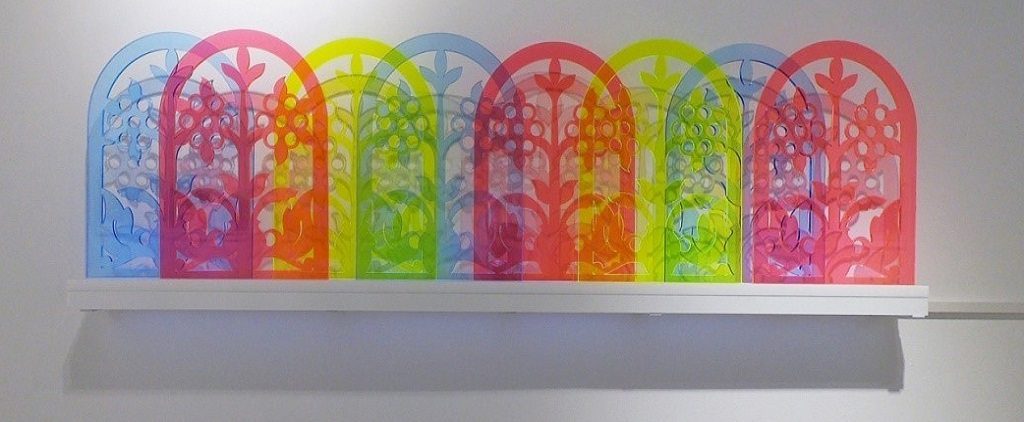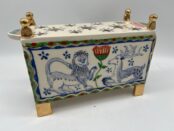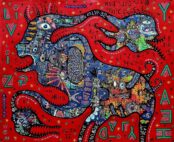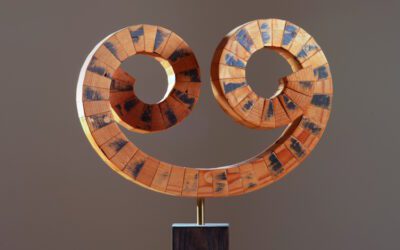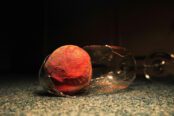[dropcap style=”font-size:100px;color:#992211;”]C[/dropcap]olleen Quigley is a Japanese-American artist from Philadelphia and is currently living and working in Dubai. She graduated from the Sculpture program at the University of the Arts in Philadelphia and received her MFA from the Tokyo National University of Fine Arts and Music in Tokyo, Japan. Her current practice encompasses sculpture/installation, encaustic, ceramic, and glass. Her research interests include postmodern strategies of making in relation to themes of materiality, originality, transcultural flow of objects, and memory.
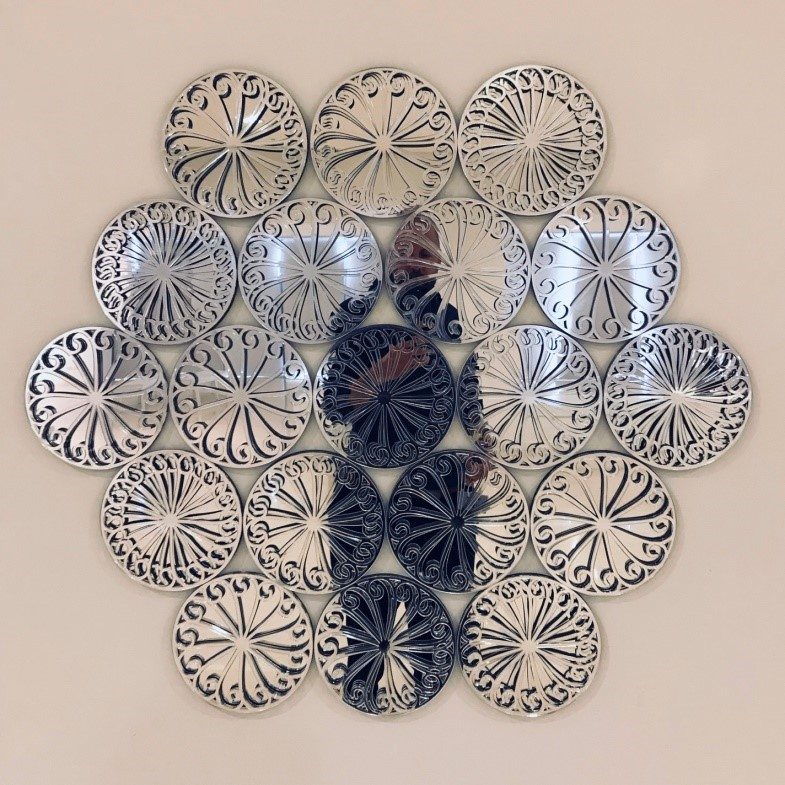
Colleen Quigley, Time Machine, 2018, Laser cut mirrored acrylic plexiglass Photograph by Walter Willems
XVA Gallery presents Colleen Quigley’s solo exhibition, The Remarkable Resilience of Symbols. Artist Colleen Quigley’s new body of work incorporates patterns and decorative symbols from the urban landscape of Dubai, including the historical district of Al Fahidi in Bur Dubai. The exhibit focuses on the flow and transformation of design patterns and raises the question about the fixing of an identity of diverse elements of material culture that transform themselves in surprising ways across time and space.
What’s your background?
I was trained as a sculptor, then as a printmaker, then as a painter so you could say my background is very broad.
What does your work aim to say?
My new body of work incorporates patterns and decorative symbols from the urban landscape of Dubai, including the historical district of Al Fahidi in Bur Dubai. The exhibit focuses on the flow and transformation of design patterns and raises the question about the fixing of an identity of diverse elements of material culture that transform themselves in surprising ways across time and space.
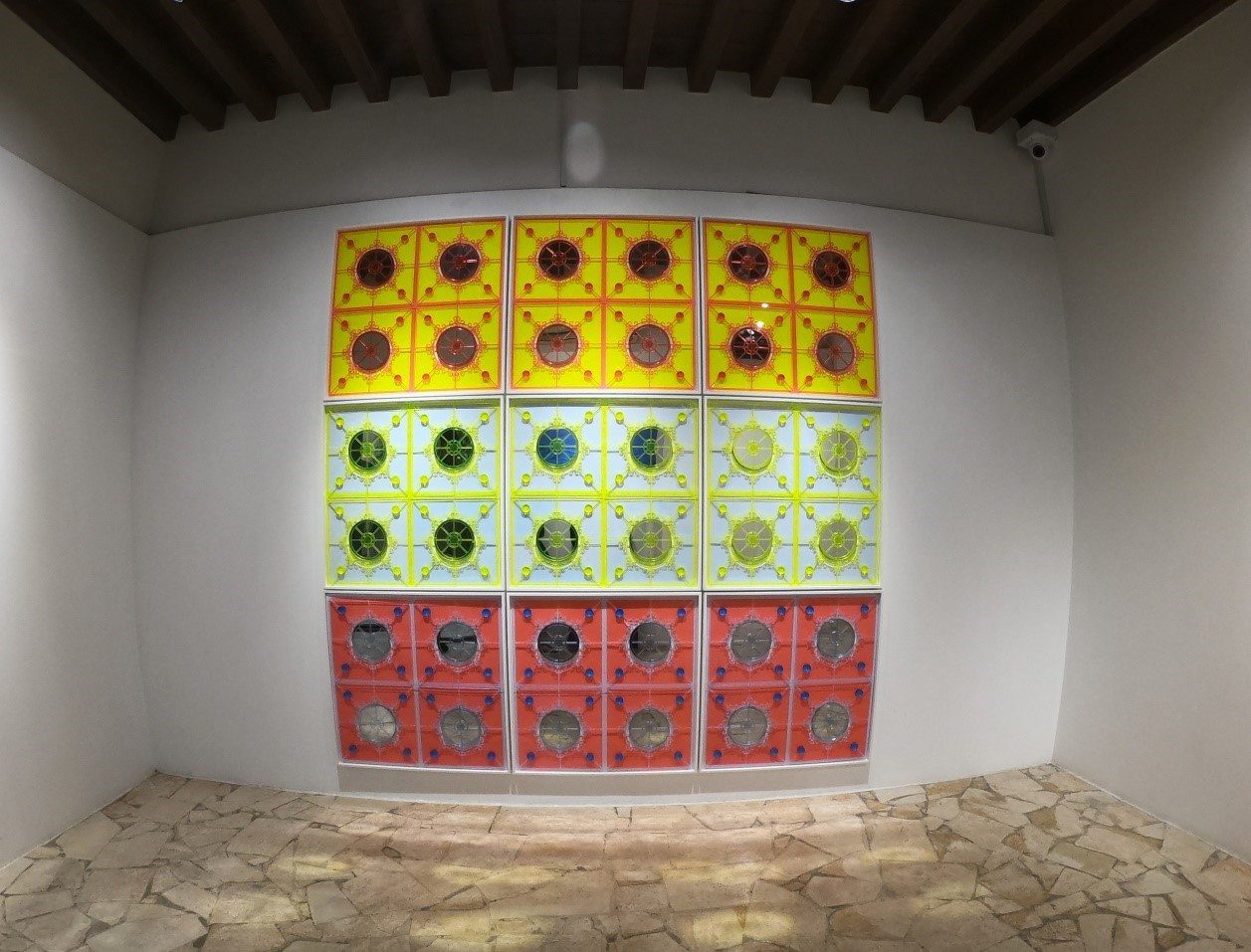
The Persistence of Signs, 2018 Laser cut transparent and mirrored acrylic plexiglass Photograph by Rabeah Essa Alhemeiri
How does your work comment on current social or political issues?
In subtle ways. My work is not overtly political but I think all art has the potential to impact on social and political issues. In my current work I seek to highlight transnational and transcultural flows. I think that it is inherently political because it calls attention to openness, collaboration and dialogue. This would be in contrast for example to art that emphases rigidity and exclusivity.
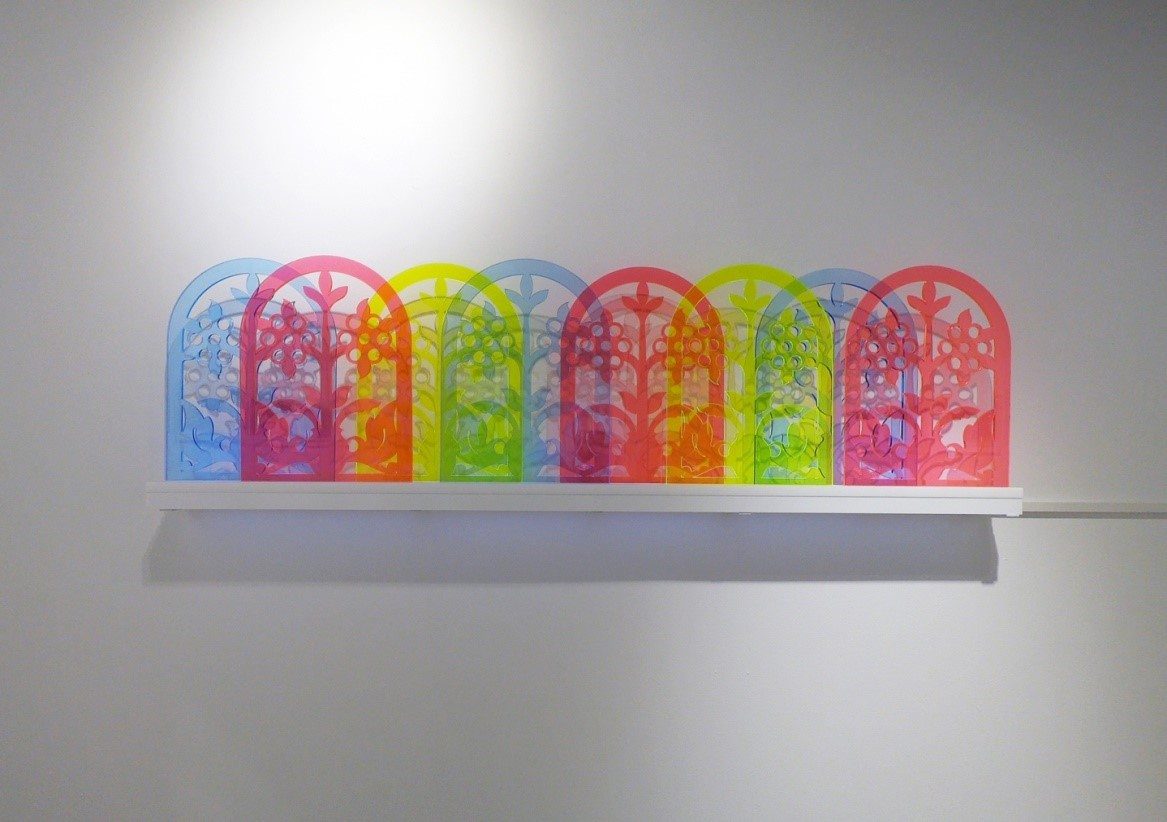
Electric Khodamuni, 2017 Laser cut transparent acrylic, LED lighting Photograph by Rabeah Essa Alhemeiri
Who are your influences?
All the art I have been exposed to (art history) and then there is the contemporary art, especially this region which I find very inspiring. I am also influenced by design, architecture and traditional artisans.
What do you believe is integral to the practice of an artist?
Everything is integral to the practice of an artist – your lifestyle, your imagination, the things that you read, the practice of making, teaching and learning from your students, traveling, talking to people from different places and learning from them.
How has your practice changed over time?
It has changed as I have changed. When I came to this country I was not very acquainted with the local culture so my work was more related to what was in the past which was mostly figurative but now it is more open to the visual culture in the region.
What work do you most identify with in your current exhibition and why?
I identify very much with the transnational and the transcultural and how culture evolves and the dynamics of global culture so I would have to say that Electric Khodamuni, The Persistence of Signs, Time Machine, and the Geometry of the Journey are the works I identify with most in this exhibition.
What themes do you pursue in your practice?
It depends on what I am engaged in at the moment. It also depends on what I am teaching, what is going on in the world, what is happening to my friends, and so on and so forth. My own research interests include postmodern strategies of making in relation to themes of materiality, originality, the transcultural flow of objects, and memory.
What inspires you?
Everything inspires me but particularly things that reflect openness, wellbeing and peace.
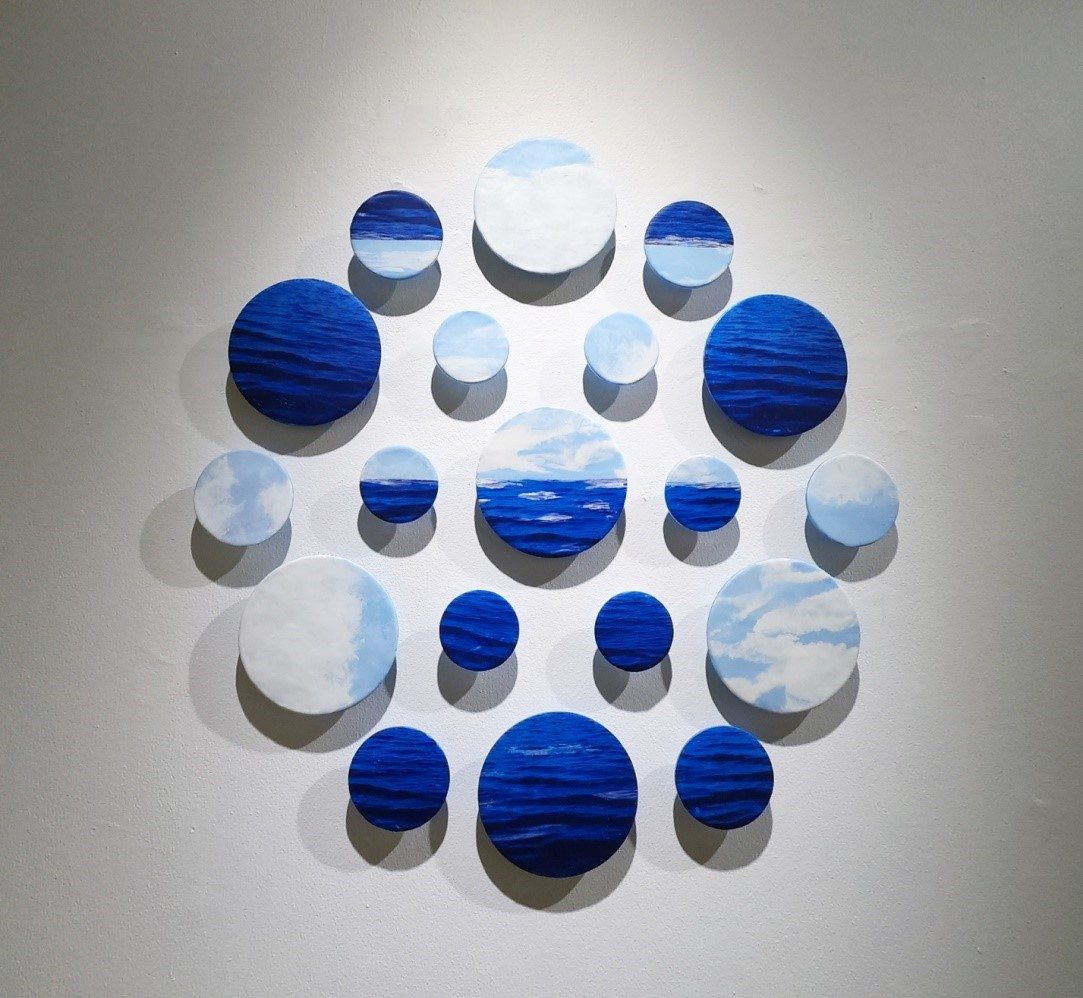
The Geometry of the Journey, 2018 Digital collage and encaustic on laser cut acrylic plexiglass Photograph by Rabeah Essa Alhemeiri
What’s the most indispensable item in your studio?
Every item is indispensable when you are making art because art is like life you need everything for inspiration, for creation, and for dissemination. That said, I would have to say my computer and sketchbook are at the top of the list.
What role do you believe the artist has in society?
I think it depends on the society. If the society has spaces for free expression, then obviously then the role of the artist is almost unlimited. But if those spaces are lacking then the artist has less room to maneuver. Of course, I am thinking of myself – this is a question that should be posed to other artists – it would be interesting to hear what they would say.
‘The Remarkable Resilience of Symbols’ is at the XVA Gallery, Dubai, April 21-May 23, 2018
For more information: xva@xvagallery.com, www.xvagallery.com, +97143535383
Naz Shahrokh has worked as an artist and educator internationally in the United States, Egypt, and the UAE. She received a BFA and an MFA in Painting, and an MS in Art History from Pratt Institute, Brooklyn, NY, where she later taught Fine Arts and Art History from 1998 to 2008. She joined the faculty at the Performing and Visual Arts Department at the American University in Cairo, Egypt in 2004-2006, and has been teaching at Zayed University, Abu Dhabi, UAE since 2008.

